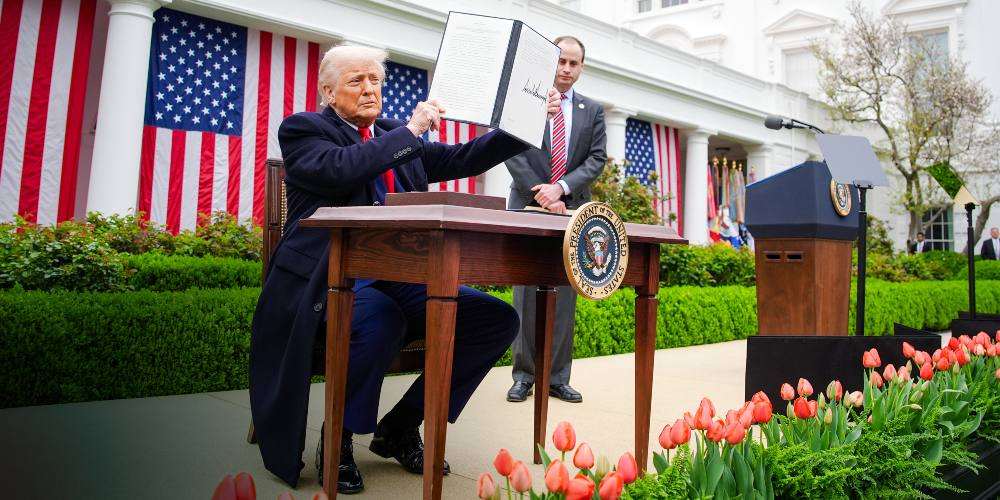Just 72 days after taking office, President Donald Trump announced on April 2 sweeping trade policy changes, introducing what he called “reciprocal tariffs” for all countries and declaring it “Liberation Day in America.”
For decades, the United States has kept low trade barriers, promoting free trade agreements with minimal or zero tariffs—at least on its part. Those days are now over.
At a White House event, Trump presented a large chart outlining baseline and reciprocal tariff rates trading partners now face in attempts to balance their high trade barriers against U.S. goods. The rates include a flat 10 percent levy, along with additional rates tailored to match each nation’s trade barriers on America.
Trump’s new tariff regime is designed to boost U.S. manufacturing and create American jobs, but the effects on inflation and the short-term and long-term impacts on the economy remain to be seen. Here are seven takeaways from Wednesday’s announcement.
- Read More: The Epoch Times
What Would You Do If Pharmacies Couldn’t Provide You With Crucial Medications or Antibiotics?
The medication supply chain from China and India is more fragile than ever since Covid. The US is not equipped to handle our pharmaceutical needs. We’ve already seen shortages with antibiotics and other medications in recent months and pharmaceutical challenges are becoming more frequent today.
Our partners at Jase Medical offer a simple solution for Americans to be prepared in case things go south. Their “Jase Case” gives Americans emergency antibiotics they can store away while their “Jase Daily” offers a wide array of prescription drugs to treat the ailments most common to Americans.
They do this through a process that embraces medical freedom. Their secure online form allows board-certified physicians to prescribe the needed drugs. They are then delivered directly to the customer from their pharmacy network. The physicians are available to answer treatment related questions.



